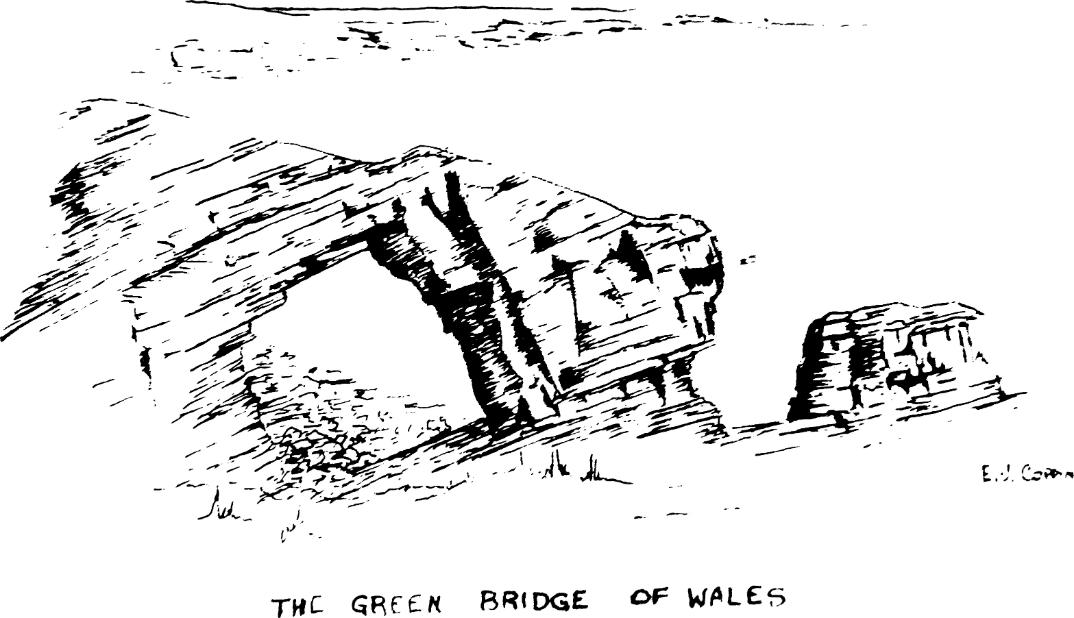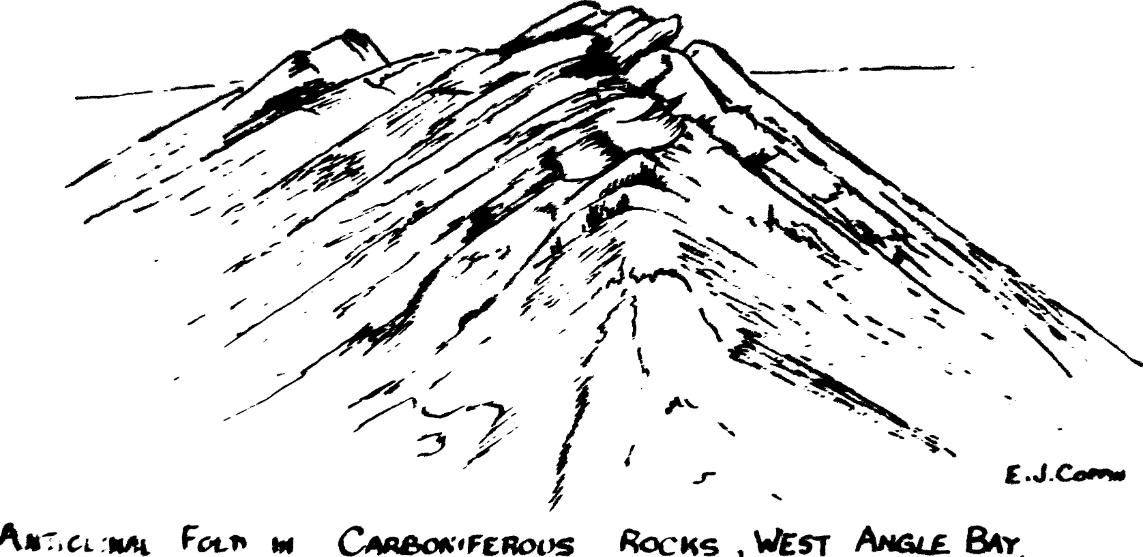Field Excursion to Pembrokeshire 10th-12th June 1983

The highlight of the Society’s Field Excursion Programme is the Weekend Excursion, and this year we were fortunate to have Dr Michael Bassett of the National Museum of Wales to lead us on an excursion to Pembrokeshire.
During the Friday (10th June) afternoon and evening twelve members assembled at the Broad Haven Hotel on the sea front at Broad Haven which was to be our base for the weekend.
11th June 1983 - The night had been very windy with heavy rain and when we looked out on Saturday morning it was a wet and blustery scene that greeted us. However like good geologists we were not deterred and we set off in our cars for the car park at Wooltack Point, a drive of about 8 miles.
The itinerary planned was to walk along the coastal section from Wooltack Point to Marloes Beach examining the succession of Silurian Rocks displayed in the cliffs. The rock succession in this area is as follows:
Redcliff Formation - rocks of Old Red Sandstone Facies but probably of late Silurian age. Gray Sandstone Group - Gray, buff and yellow-green sandstones with grits and sandy siltstones. Silurian (Wenlock). Coraliferous Group - Olive-green and grey shades, mudstones and sandy siltstones. Silurian (Upper Llandovery - Wenlock). ………………………………..Unconformity……………………………….. Skomer Volcanic Group - Higher beds - grits, conglomerates, sandstones and sandy mudstones with thick basalts and tuffs. Lower beds - thick basalts, rhyolites, tuffs and an ignimbrite with conglomerates, sandstones and siltstones. Silurian (Llandovery).
We started by making the stiff climb to the lookout point and although the weather was not good we were able to get a good view of the islands of Skomer and Skokholm. Skomer is a National Nature Reserve and is made up largely of volcanic rocks giving its name to this particular rock group. Rocks of the Skomer Volcanic Group could be seen in the very steep and inaccessible cliffs of Wooltack Point.
The walk westwards along the cliff top path enabled most of the formation to be seen, often repeated by faulting, without the need to go down the very steep and slippery paths to the beach.


At Gateholm Stack and Island the characteristic Old Red Sandstone (or Silurian Old Red Sandstone Facies) was seen, though further west along the path this was faulted out by the Grey Sandstone Group. From this point the magnificent Marloes Sands could be viewed and an easy descent to the beach was made at Matthew’s Isle. The strata on the beach are nearly vertical and walking westwards the formations change through the Old Red Sandstone were examined, all the water was by now dry and bright and lunch was taken on the beach at the Three Chimneys, a landmark formed by three nearly vertical beds of sandstone which stand out from the softer siltstone beds bedded in the cliff. Refreshed we made our way back to the car park south of Marloes village and by some clever car work managed to finish up with all the cars and all the people at our starting point, Woolstack car park.
As it was now late in the afternoon it was decided that we should return to Broad Haven making a stop at one of the rare inland Silurian exposures at Stlaemill Farm, After gaining permission at the farm we proceeded to investigate a small but what proved to be a very fossiliferous exposure. The beds exposed belonged to the Coraliferous Group and the fossils were preserved in bands of brown “rotten stone”. Brachiopods and corals were quite common with the occasional trilobite head or tail. The farmer and his wife became very interested in our activity and the last two members took the opportunity to buy some hen pates.
12th June 1983 - Sunday turned out to be a dry sunny day and we set out to explore the geology south of Milford Haven.
The first call was at West Angle Bay where folding in Carboniferous Limestones and Lower Limestone Shales is well displayed.
A short drive south took us to Fresh Water West where almost at the waters edge we were able to examine the well known Fossil Forest of Pleistocene Age. The succession from glacial wash through fossil soils to the oak tree debris was clearly shown. Starting with black Ordovician shales, in which a number of graptolites including a very large specimen was found, a traverse was made south through the Silurian rocks to the well exposed Old Red Sandstone. These rocks contain calcite deposits indicating that they had been exposed in a dry climate and also showed complex sedimentary structures. A little way back from the beach the leader pointed out a reconstructed seaweed drying hut of the type that had been widely used when dried seaweed was used for making Laver Bread.
We then travelled south to Flinston (which can only be visited when the Castle Martin Ranges are not in use) and had our lunch in the Picnic Area there. A short walk took us to the coast where we had magnificent views of the sea-stacks, in the Middle Carboniferous Limestone, including the Green Bridge of Wales. At this locality the hundreds of guillemots proved as interesting as the spectacular geology.
From Flinston we travelled east to make our last stop at the popular Fresh Water East beach. In warm sunshine we examined the Silurian rocks on the south side of the bay and the “rotton stone” bands yielding a diverse fauna. Dr Bassett pointed out that in the rocks on the north side some very small but important early Silurian plants had been found.
After thanking Dr Bassett for making the excursion such an enjoyable one and encouraged by his agreement to lead another trip next year we left for the drive back to Bath wishing we could have had a few more days on the splendid Pembrokeshire coast.
No account of this Field Excursion would be complete without expressing the thanks of the Society to our Secretary, Joy Coppin, who organised the trip and enabled us to have a very instructive and enjoyable weekend.
